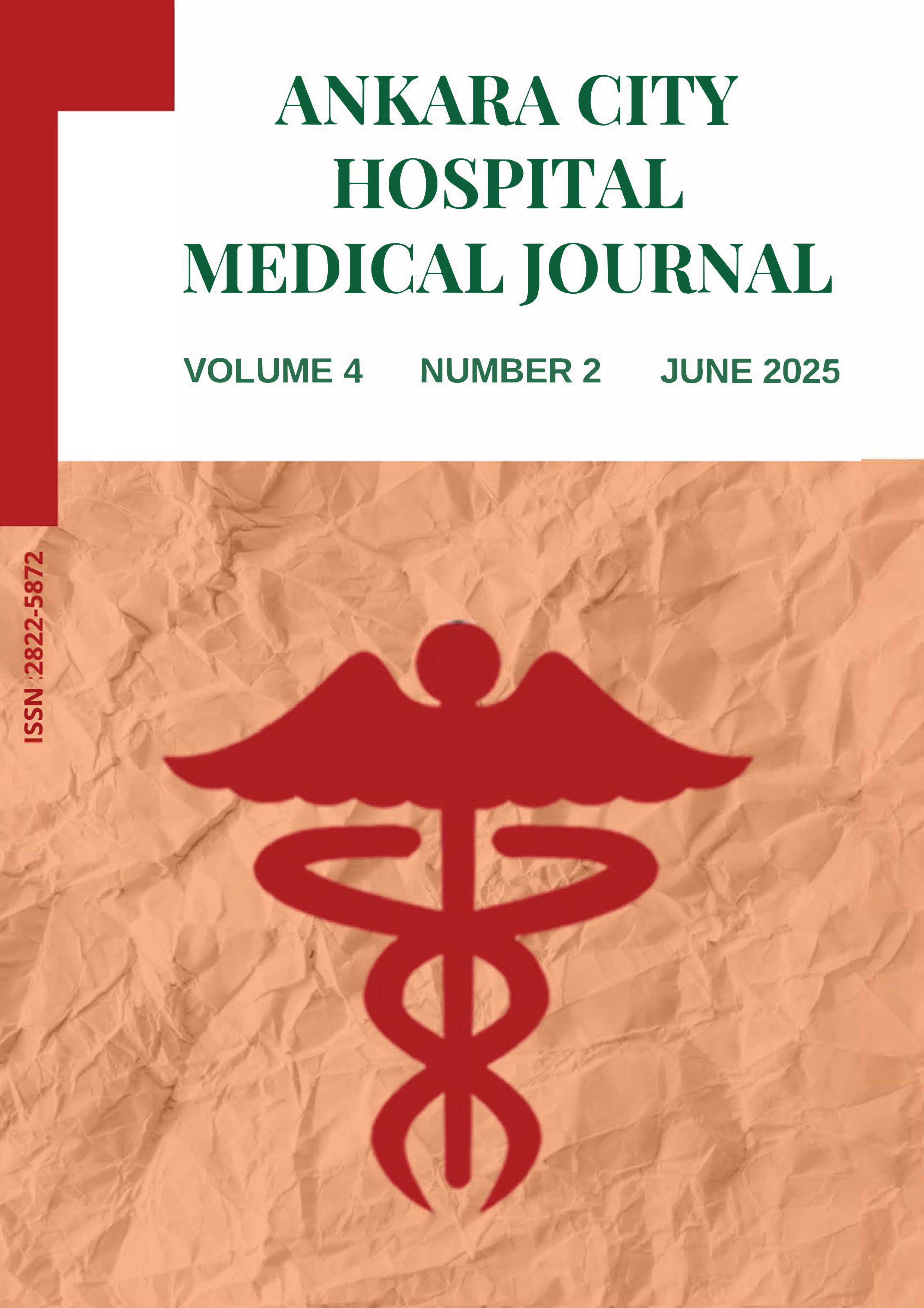
Volume: 1 Issue: 1 - 2022
| 1. | Full Issue Pages I - II |
| RESEARCH ARTICLE | |
| 2. | Correlation between hematological parameters and clinical scoring systems in indicating the severity of covid-19 disease Uğur Bal, Burhan Albay, Okan Günaydın doi: 10.5505/achmedj.2022.28291 Pages 1 - 10 INTRODUCTION: In this study, it was aimed to determine the relationship between the blood parameters and scoring systems which are used to determine the severity of COVID-19. METHODS: Patients, who were 18 years of age or older, and were hospitalized due to COVID-19 were evaluated retrospectively. Inflammatory markers and scoring systems were used to determine the severity of the COVID-19 patients. RESULTS: In terms of the other hematological indices (NLR, PLR, MPV/LR, LMR, DFR, SII, and NLP), a significant difference was found between severe and non-severe patient groups. All scoring systems were found to be significantly higher in the severe patient group. The SOFA showed the strongest correlation with the MPVPR. BCRSS showed the strongest correlation with the DFR. DISCUSSION AND CONCLUSION: It is suggested that applying a hematological parameter that predicts the course of severe Covid-19 instead of scoring systems would be a rational, fast, and inexpensive approach. |
| CASE REPORT | |
| 3. | Tracheoesophageal fistula after intubation due to COVID-19: Endoscopic treatment Enes Seyda Şahiner, Bülent Ödemiş, Tolga Canlı doi: 10.5505/achmedj.2022.43531 Pages 11 - 15 Acquired non-malignant tracheoesophageal fistula (TEF) is a rare disease that has high levels of morbidity and mortality, and the etiology of TEF remains unclear. Better knowledge of predisposing factors such as traumatic intubation, high endotracheal tube cuff pressure, inflammation, and infection of COVID-19 could reduce the number of cases of acquired TEF. In this case report, a 36-year-old male patient who developed a TEF after intubation as a result of COVID-19 is presented. After short-term intubation, the TEF detected by neck CT and fluoroscopy was successfully closed with an endoscopic intervention using an over-the-scope clip and no leak was detected at the 6-month follow-up. |
| 4. | Ascites as the Presenting Symptom of Multiple Myeloma Fatih Acehan, Osman İnan, Mustafa Comoglu doi: 10.5505/achmedj.2022.98608 Pages 16 - 21 Multiple myeloma cases frequently present with complaints of infection and low back pain. Acid is a very rare finding in multiple myeloma. In this case report, we discussed a case of candida esophagitis and ascites, which was considered to be related with multiple myeloma. |
| 5. | Adrenal involvement due to sarcoidosis presenting with Addison's disease Fatih Acehan, Enes Seyda Şahiner doi: 10.5505/achmedj.2022.13007 Pages 22 - 26 In this case report, we presented a case presenting with adrenal insufficiency, and which was thought to have sarcoidosis related involvement of adrenal gland in the etiology. A 68 years old female patient was diagnosed with sarcoidosis for having bilateral hilar lymphadenopathy, nodular lesions in the lungs, elevated serum angiotensin converting enzymes, and the colon and velum biopsies being concordant with noncaseified epitheloid granuloma. In addition, fatigue, weight loss, hyperpigmentation, hypotension, hyponatremia which had been continuing for four months until the admittance of the patient, suggested adrenal insufficiency. With the measurement of serum cortisol levels low and adrenocorticotropic hormone levels high in the further tests, the adrenal insufficiency diagnosis was established. After excluding other reasons of Addison's disease (autoimmune, tuberculosis, malignity, etc.), the adrenal insufficiency was thought to be related to sarcoidosis involvement. |
| 6. | A Rare Cause of Hypercalcemia: Asymptomatic Isolated Hepatic Sarcoidosis Fatih Acehan, Güler İnönü doi: 10.5505/achmedj.2022.33043 Pages 27 - 31 A sixty-five-year-old female patient applied to our clinic with complaint of asthenia existing for one year. Hypercalcemia, elevation of cholestatic enzymes and angiotensin-converting enzyme level were detected in the laboratory values. The histopathological examination in the liver biopsy was reported as consistent with granulomatous reaction not involving caseous necrosis, sarcoidosis’ involvement of liver. Any findings of pulmonary involvement were not discovered in the bronchoscopic examination and biopsy. Steroid treatment was started with the diagnosis of isolated hepatic sarcoidosis. We deemed it worthy of presenting as it is a rare case. |
| 7. | Successful add-on clarithromycin treatment for polymyalgia rheumatica Masashi Ohe doi: 10.5505/achmedj.2022.24865 Pages 32 - 36 Macrolide antibiotics (MACs) such as erythromycin and clarithromycin (CAM) provide not only anti-bacterial activity but also anti-inflammatory and immunomodulatory effects. Considering anti-inflammatory effects, several recent studies have reported the successful treatments of rheumatoid arthritis and polymyalgia rheumatica (PMR) treated using CAM. Herein, we also report another case of patient with PMR treated using CAM. A 72-year-old woman with PMR was treated using prednisolone (PSL) (20 mg/day). When muscle pain disappeared and C-reactive protein (CRP) decreased, the PSL dosage was gradually reduced without any sign of recurrence. When the PSL dosage was decreased to 5 mg/day, muscle pain returned, and CRP became positive. The PSL dosage was successfully increased to 8 mg/day. The PSL dosage was gradually decreased without any sign of recurrence. When the PSL dosage was again decreased to 5 mg/day, muscle pain returned, and CRP increased. As an alternative to increasing the PSL dosage, CAM was added. About four weeks after CAM treatment, the muscle pain disappeared, and CRP became negative. This case suggests that treatment using CAM may be effective in some cases of PMR. |









